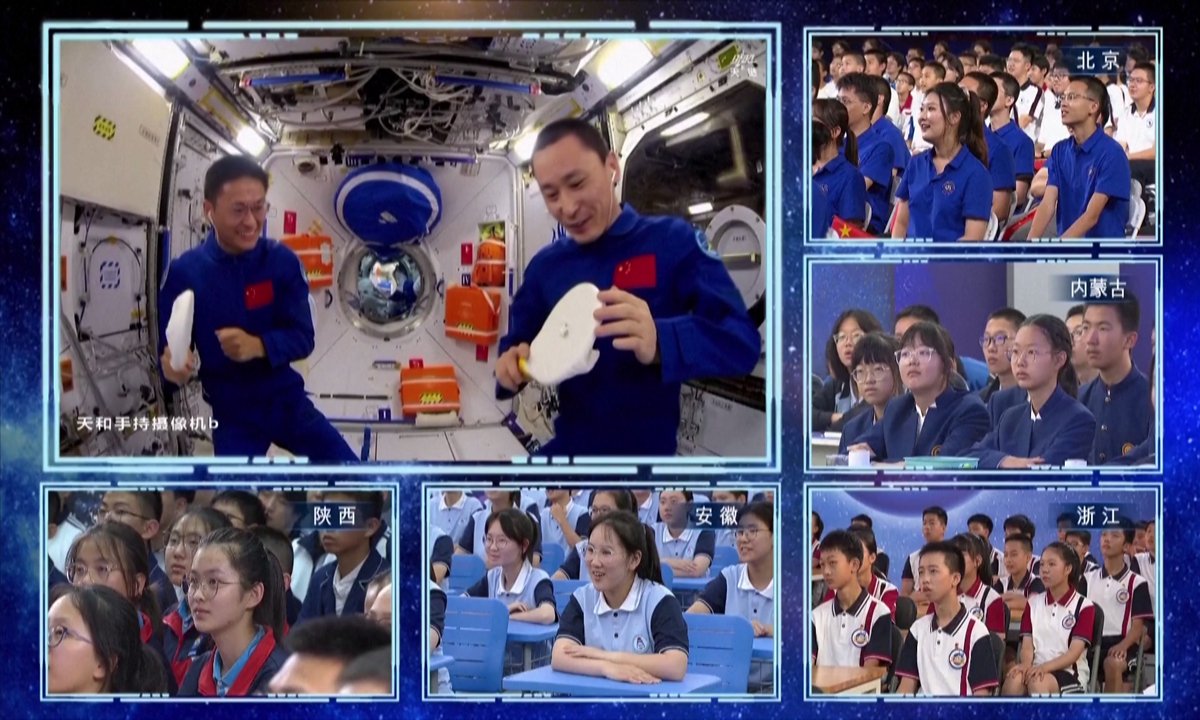“Shenzhou-16’s Innovative Lecture from Space: Inspiring the Next Generation”
Introduction
On an unprecedented day, China’s Shenzhou-16 crew made history by live streaming their inaugural scientific lecture directly from the Tiangong space station, specifically from the Mengtian lab module. This wasn’t merely an entertaining session for those on the ground; it represented a pivotal step in interconnecting space research with real-world academic applications.
Beyond Popularization
Unlike earlier lectures that centered primarily on demystifying and popularizing scientific concepts, this fresh episode promised genuine, tangible benefits. It catered not only to satiate the curious minds of the general populace but also acted as a vital data source for researchers and budding scientists. By demonstrating the nuanced alterations in experimental outcomes due to space’s unique environment, the crew aimed to encourage more scientists to aspire to be payload specialists, fueling the dream of space travel.
Ground Connection: The Classroom Audience
While the vastness of space cradled the astronauts, the connection to the ground was kept vibrant with five dedicated classrooms hosting over 2,400 enthusiastic participants. A noteworthy audience was seated at Beihang University in Beijing, an institution proud to have Shenzhou-16’s crew member, Gui Haichao. Known as China’s pioneering civilian taikonaut, Gui is also an esteemed faculty member at the university. His students, accustomed to his face-to-face lectures, now found themselves in the unique position of witnessing their mentor teach from space, seamlessly blending the realms of the familiar and the extraordinary.
Experiments in Space: The Unfamiliar Norms
Commencing their session with an introductory tour of Mengtian’s experimental compartments, the crew aimed to emphasize the stark differences between terrestrial and extraterrestrial environments. A striking example was the ping pong experiment. A water-based ball, when struck with an ordinary racket, clung tenaciously to its surface. In contrast, the same ball ricocheted when hit with a towel-wrapped racket.
Besides these enlightening yet fun demonstrations, the crew delved into more complex areas. They conducted experiments around gyroscopes and the conservation of angular momentum, specifically curated keeping in mind the collegiate audience. Zhang Xiaotian, a colleague of Gui and associate professor at Beihang University’s School of Astronautics, mentioned the importance of these experiments. Students, especially those in advanced levels of spacecraft design, would find the principles presented instrumental in addressing real-world challenges.
The Gui Factor: A Fresh Perspective
Zhang praised Gui’s participation, acknowledging the zest he brought to the Tiangong Classroom series. Conversations with Gui, pre-lecture, had given Zhang glimpses of Gui’s spirited demeanor. Observing him with the same exuberance in the space station resonated a profound sense of joy and assurance among his peers back home.
Li Jingxuan, another of Gui’s colleagues and a professor, illuminated how gravity’s role is paramount when studying engine combustion. Flames, particularly diffusion ones, behave differently under the constraints of gravity. The lecture accentuated this by focusing on flame behavior in a near-perfect weightless scenario, producing data indispensable to engine combustion research.
Implications and Broader Horizons
Renowned space analyst and commentator, Song Zhongping, emphasized the lecture’s role in underlining the importance and potential ROI of advancing space technology. Such initiatives can transform industries, making leaps in development, while debunking the misapprehension that space exploration merely drains resources.
The inclusion of a civilian taikonaut like Gui is bound to inspire more scientists to envisage space journeys. It also serves as a beacon to the youth, spurring them towards pioneering technological pursuits.
In the days leading up to this groundbreaking lecture, the Shenzhou-16 team organized the space station’s debut art exhibition, showcasing artworks by young African talents. This initiative, besides celebrating art, hinted at the expansive prospects of China-Africa space collaboration. As mission commander Jing Haipeng eloquently summarized while presenting the art pieces from a staggering altitude of 400 kilometers, the potential of such collaborations is “as vast as the starry expanse.”
Conclusion
The Shenzhou-16 lecture from space wasn’t merely a dissemination of knowledge. It was an ambitious bridge between Earth and space, between seasoned scientists and budding learners, and between dreams and the infinite possibilities beyond our planet.
Read More:
